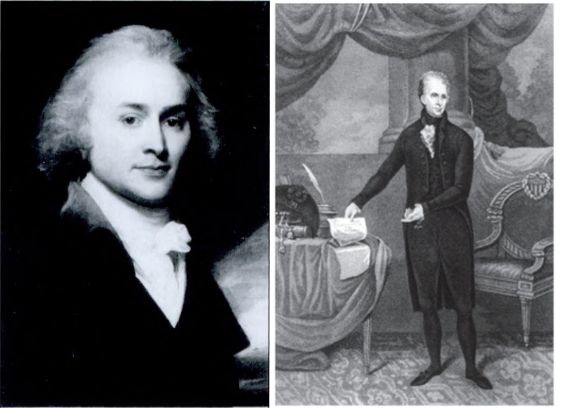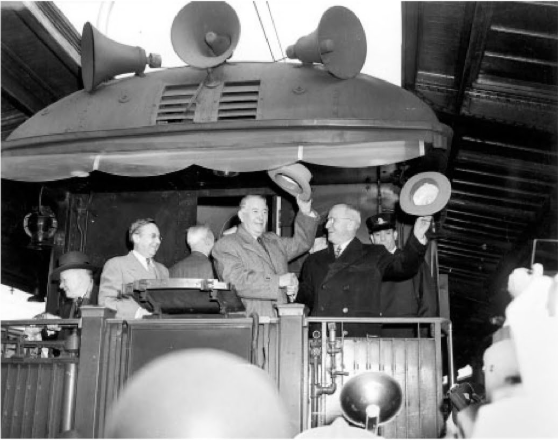American politics is known worldwide for its unpredictability, and it isn’t uncommon for an underdog to win in a major US election. To celebrate last week’s Election Day, we’re counting down 5 of the biggest political upsets in US history, from a back room deal, to the country’s most successful write-in candidate.
1824: John Quincy Adams’ “Corrupt Bargain”

Although we’re accustomed to only having two candidates in a Presidential election, in 1824, there were four candidates for voters to choose from. Secretary of State John Quincy Adams, Statesman Andrew Jackson, Treasury Secretary William Crawford, and House Speaker Henry Clay all ran for the top prize in the 1824 election.
Although it seemed to be an election primarily between Adams and Jackson (with Jackson securing a very slim majority over his competitors in the popular election), all four candidates failed to secure a majority of the Electoral College vote on Election Day. As a result, the House of Representatives was called on to break the tie.
Because he had received the least amount of Electoral College votes, House Speaker Henry Clay was dropped from the Presidential running, and he presided over the House while they decided on the Presidency. A decision wasn’t reached on the race until about a month later, when most of Clay’s supporters moved their support to John Quincy Adams. And when Adams was finally sworn in as President, he quickly apppointed Clay as his new Secretary of State.
Jackson was angered by the decision, which he called a clear “corrupt bargain,” and vowed to return to win the Presidency. And return he did in 1828, when he beat out Adams’ run for a second term in the White House.
1990: Paul Wellstone
When Paul Wellstone burst onto the political scene in 1990, nobody expected much from the college political science professor. Wellstone had no experience in practicing politics, and little funding for his campaign. Even worse news for the political hopeful was his competitor, Rudy Boschwitz. Boschwitz was not only a wealthy millionaire, but also the incumbent senator for Minnesota since 1978.
Despite being outspent 7-to-1 by Boschwitz, Wellstone pressed on with a grassroots campaign that focused on mobilizing the young, minority, and farming voters. Wellstone presented himself as an everyman, always campaigning in jeans from a rickety old schoolbus, and appearing in low-budget (and typically funny) TV commercials.
By the time the 1990 senatorial election arrived, it was a close match between Wellstone and Boschwitz. However, days before the election, supporters of Boschwitz accused Wellstone of being a “bad Jew” for marrying a Christian, and raising his children outside the Jewish faith (as both candidates were Jewish). This mudslinging backfired on Boschwitz’s campaign, however, and Wellstone won the Senate seat by 9 points.
Wellstone was a popular senator in Minnesota, and was widely regarded as the “conscience of the Senate.” He was reelected to the senate in 1996, and was preparing to run for reelection in 2002. But only days before the election, Wellstone and seven others, including his wife and daughter, were involved in a plane crash near Eveleth, Minnesota. All on board the plane died in the crash. Wellstone’s seat was eventually won by his competitor, Norm Coleman.
1844: James K. Polk
The future 11th President of the United States first emerged as the underdog candidate for the Democratic Party against popular Whig statesman Henry Clay. James Polk had served previously as Speaker of the House and the Governor of Tennessee, but was relatively unknown nationwide when he first began his presidential campaign. His anonymity led many to believe he had no chance against Clay, and even led to comments from his competitor that his nomination must have been a joke.
However, Polk quickly proved himself to be an able public speaker, and his ardent support for the manifest destiny movement was popular amongst voters. His campaign promised to work towards the annexation of Texas, and expressed an intent to expand the United States to the West Coast.
In contrast, Clay’s campaign wavered on whether or not it might seek Texas’ annexation, and he was also painted by Polk’s side as a weak man with a penchant for drinking and gambling. These negatives proved to be too much for Clay’s campaign for the Presidency, and he lost to Polk by just 38,000 ballots in the popular vote.
During his time in office, Polk presided over a compromise for the Oregon Territory and the Mexican-American War, the latter of which resulted in the cession of large amounts of western territory (including present-day California and Nevada). Although Polk was a popular President, he chose to stick to a campaign promise to only seek one term as President.
2010: Lisa Murkowski
A native of Alaska, Murkowski holds the distinction of being only the second Senator in US history to win their seat via write-in. First appointed to the Senate in 2002, Murkowski has gained a reputation as a moderate Republican within the Senate, and is widely regarded as a crucial swing-vote for ballots under consideration by Congress.
Although Murkowski did not initially win her seat within the Senate outright (she was appointed as an Alaskan senator by her father, then-Governor Frank Murkowski), she went on to easily win reelection to the seat in 2004. But by 2010, Murkowski was struggling to maintain her hold on the Senate position, and she inevitably lost the Republican primary to tea-party candidate Joe Miller. Undaunted, Murkowski began a write-in campaign supported by state teachers’ and firefighters’ unions, as well as Native-American corporations.
After weeks of campaigning, and an election that involved over two weeks’ worth of write-in ballot counting, Murkowski was declared the narrow victor in the election over both Joe Miller and Democrat Scott McAdams. Miller subsequently refused to concede defeat to Murkowski, and appealed the decision several times to Alaskan superior courts. After two months of litigation, Murkowski was certified as the winner by then-Governor Sean Parnell.
Since her historic 2010 win, Murkowski has been able to hold her Senate seat through another recent election in 2016.
1948: Harry Truman

President Harry S. Truman’s first term in the Presidency had been anything but smooth. After the 1946 midterm elections handed both the Senate and the House of Representatives to the Republican Party, it seemed that Truman’s days in the White House were numbered.
To make matters worse, polls showed that only one in three Americans believed Truman had been an effective President, and there had been a revolt against the President within his own cabinet, with his commerce secretary declaring his candidacy as a third-party candidate. Newspapers laughed at the potential of another Truman Presidency, with the Chicago Daily Tribune calling the President a “nincompoop.”
In contrast, Truman’s main opponent Thomas Dewey was a well-regarded governor from New York. Many (including Dewey) believed he had a clear path to the Presidency, but Truman was not one to simply give up. Embarking on a 22,000 mile campaign, Truman attempted to convince voters to give him another four years in office. But Dewey’s victory still seemed imminent on Election Day – the Chicago Daily Tribune even printed early copies of a paper declaring “Dewey Defeats Truman.”
But when America awoke on November 3, 1948, it was revealed that Truman had prevailed with a four-point lead over his competitor. Truman’s second term oversaw the US entrance into the Korean War, but also proved to be relatively unpopular. He was later succeeded by Republican Dwight D. Eisenhower.

